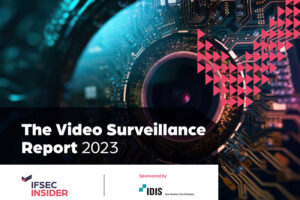Lone workers put themselves at risk every day, just doing their job. If you employ workers who must do their job out of eyesight and earshot of others, protect them.
You can keep your workers safe with proper training as well as lone worker security devices. Such devices can tell you your employee’s location or send a warning signal when your employee has suffered an impact or stopped moving for a given period of time.
Keep reading to learn about six types of lone worker security devices that will keep your employees safe.
What is a lone worker?
Anyone working out of reach of supervisors or colleagues qualifies as a lone worker.
Being a lone worker does not always mean the employee is alone. It just means others cannot see or hear them. Thus, individuals working on the same job site as others but out of sight would qualify as lone workers. Here are a few other potential lone workers:
- Workers who work alone while others take a break
- Single employees working late
- Employees working away from other employees but still in public or populated places
- Employees travelling alone for business
- Employees working from home.
Lone workers can be construction workers on a job site working alone, healthcare workers caring for patients at home, and social workers conducting home visits alone. They could also be someone working alone at the office after everyone else has gone home.
Working alone leaves an employee vulnerable. Plus, the law dictates that all businesses must adequately protect their lone workers. Here are a few of the ways you can maximise your lone workers’ safety.
1. Lone worker apps
Technology and smartphones have boosted the world of security for lone workers. Smartphone lone worker apps can give employers real-time information about an employee’s location and wellbeing.
For example, some apps have safety features like a ‘man-down’ alert or panic alarm. They can also include a timed check-in and discreet panic function.
Some of the newer smartphone apps connect to a Cloud-based monitoring hub that gives employers real-time updates. They can see, at a glance, where their employee is and if they’re relatively safe.
2. GPS tracker
GPS trackers also provide personal security for lone workers. These security devices give employers real-time information on their employees’ locations without compromising the privacy of a smartphone.
For example, the Prime 3G GPS tracker has a powerful, reliable tracking device that you can use for vehicle tracking, on high-risk / high-value assets in transit, or for lone worker security.
When a lone worker uses the tracker, they can alert up to three different people by SMS with the device’s SOS button.
A ‘geo-fence’ can also be defined around a specific geographical area, triggering an alert when the device leaves that area.
3. Panic alarm
If you don’t opt for the savvier trackers, a more simple security system for a lone worker is a panic alarm. Your workers will have personal security knowing they can push the panic alarm publicly or discreetly should they need to.
The panic alarm is especially helpful when your lone worker feels like they’re in a potentially dangerous situation and needs assistance. A discreet alarm works especially well when a lone worker feels threatened by someone and does not want to alert that person to the fact that help has been called.
4. Non-movement alarm
A non-movement alarm will sound after your employee has stopped moving for a given amount of time.
The lone worker device will detect accidents and medical emergencies in which the worker cannot hit a panic button.
5. Impact detection
Some man-down alarms will also have impact detection. This means the alarm will sound not only when the worker isn’t moving but also when the device sustains an impact.
If your worker is in an accident or falls from a height and cannot activate the panic alarm, the impact detection alarm will be triggered.
6. Training and communication
You can best prepare your lone workers for the dangers they may face by giving them adequate training regarding safety protocols. Train your lone workers in every possible scenario.
Implement a protocol where workers report near misses, as well. These are situations where individuals come close to having an accident, even when following current procedures. A near-miss report will give you the data necessary to review and revise current procedures and keep your lone workers safe.
Risk assessments for lone workers are essential. For example, social workers who enter homes alone should be able to identify red flags for potential risks. This type of basic risk assessment will ultimately keep your lone workers safer.
Lone worker security made simple
This article was originally published on ESA Risk. For advice and support relating to lone worker security, risk assessments and suitable devices you can contact the author of this article, Liam Doherty, on [email protected] or +44 (0)843 515 8686.
Free Download: The Video Surveillance Report 2023
Discover the latest developments in the rapidly-evolving video surveillance sector by downloading the 2023 Video Surveillance Report. Over 500 responses to our survey, which come from integrators to consultants and heads of security, inform our analysis of the latest trends including AI, the state of the video surveillance market, uptake of the cloud, and the wider economic and geopolitical events impacting the sector!
Download for FREE to discover top industry insight around the latest innovations in video surveillance systems.

